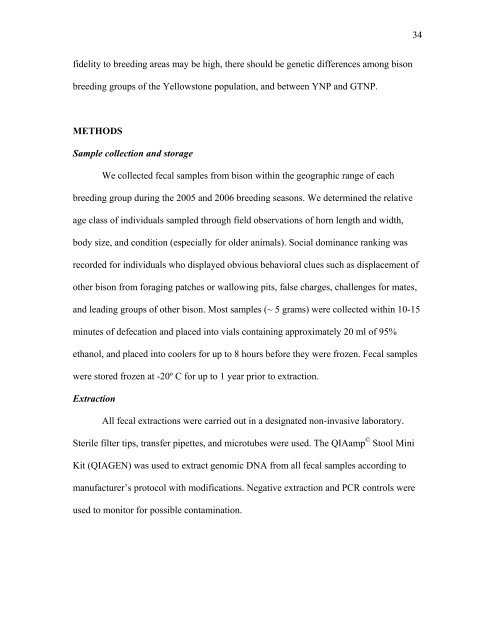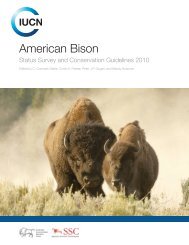Declaration Dr. Thomas H. Pringle - Buffalo Field Campaign
Declaration Dr. Thomas H. Pringle - Buffalo Field Campaign
Declaration Dr. Thomas H. Pringle - Buffalo Field Campaign
Create successful ePaper yourself
Turn your PDF publications into a flip-book with our unique Google optimized e-Paper software.
fidelity to breeding areas may be high, there should be genetic differences among bison<br />
breeding groups of the Yellowstone population, and between YNP and GTNP.<br />
METHODS<br />
Sample collection and storage<br />
We collected fecal samples from bison within the geographic range of each<br />
breeding group during the 2005 and 2006 breeding seasons. We determined the relative<br />
age class of individuals sampled through field observations of horn length and width,<br />
body size, and condition (especially for older animals). Social dominance ranking was<br />
recorded for individuals who displayed obvious behavioral clues such as displacement of<br />
other bison from foraging patches or wallowing pits, false charges, challenges for mates,<br />
and leading groups of other bison. Most samples (~ 5 grams) were collected within 10-15<br />
minutes of defecation and placed into vials containing approximately 20 ml of 95%<br />
ethanol, and placed into coolers for up to 8 hours before they were frozen. Fecal samples<br />
were stored frozen at -20º C for up to 1 year prior to extraction.<br />
Extraction<br />
All fecal extractions were carried out in a designated non-invasive laboratory.<br />
Sterile filter tips, transfer pipettes, and microtubes were used. The QIAamp © Stool Mini<br />
Kit (QIAGEN) was used to extract genomic DNA from all fecal samples according to<br />
manufacturer’s protocol with modifications. Negative extraction and PCR controls were<br />
used to monitor for possible contamination.<br />
34










